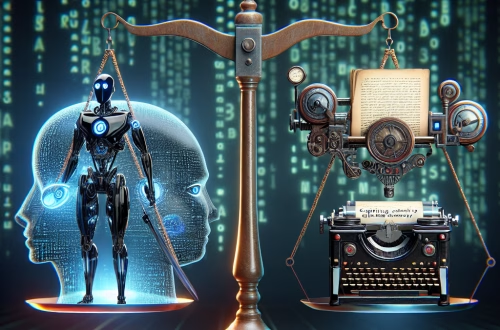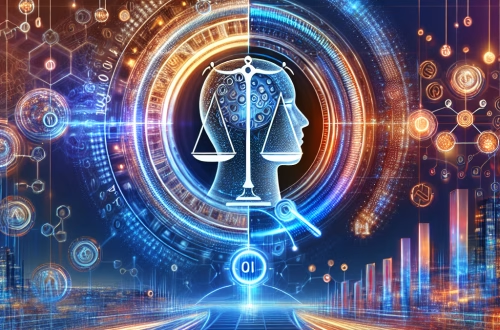Gemini vs GPT-5 Use Cases
Summary:
Google’s Gemini and OpenAI’s GPT-5 represent the cutting edge of AI models, each excelling in different applications. While GPT-5 is optimized for natural language processing (NLP) tasks like text generation and summarization, Gemini shines in multimodal applications, integrating text, images, and audio. Businesses and developers must understand their respective strengths to leverage them effectively. This article compares their use cases, outlining where each model performs best, potential limitations, and how they impact AI-driven industries. Knowing the differences can help novices and professionals make informed decisions when adopting these technologies.
What This Means for You:
- Choosing the Right Model for Your Needs: If your work relies heavily on text-based tasks (e.g., chatbots, content writing), GPT-5 may be the better fit. For projects requiring vision and speech integration (e.g., interactive apps, data analysis), Gemini offers unique advantages.
- Optimizing AI Workflows: Combining both models could enhance productivity. For example, GPT-5 can draft reports while Gemini analyzes accompanying images. Always test model outputs for biases and accuracy before deployment.
- Staying Ahead in AI Adoption: Businesses should track updates from OpenAI and Google to refine AI strategies. Training staff on model-specific functionalities can maximize efficiency and innovation.
- Future Outlook or Warning: Rapid advancements mean today’s “best” model may be outdated soon. Additionally, reliance on proprietary AI carries risks, including cost fluctuations and unpredictable updates.
Explained: Gemini vs GPT-5 Use Cases
Overview of Gemini and GPT-5
Gemini is Google DeepMind’s latest multimodal AI, designed to process and generate text, images, and audio seamlessly. It excels where multiple data types intersect, such as real-time translation with visual context or AI-generated media with integrated voiceovers. GPT-5, OpenAI’s anticipated upgrade to GPT-4, primarily focuses on scaling NLP capabilities—enhancing coherence, creativity, and reasoning in text-based applications.
Key Strengths of Each Model
GPT-5 Use Cases:
- Content Creation – Long-form articles, scripts, and marketing copy with high linguistic coherence.
- Programming Assistance – Auto-generating code, debugging, and explaining syntax in multiple languages.
- Virtual Assistants – More nuanced, context-aware responses in customer service automation.
Gemini Use Cases:
- Multimodal Search – Delivering combined visual and text results (e.g., identifying objects in uploaded photos).
- Medical Imaging – Assisting diagnostics by analyzing X-rays alongside patient history.
- Interactive Learning – Educational tools that explain concepts via text, diagrams, and spoken word.
Limitations and Challenges
GPT-5’s primary weakness lies in handling non-text data without additional plugins. Meanwhile, Gemini may underperform in purely text-based tasks compared to GPT-5 due to its generalized training. Both models require extensive validation to mitigate biases and hallucinated outputs. Smaller enterprises might face cost barriers, as deploying these models at scale demands significant computational resources.
Industry-Specific Applications
Healthcare: Gemini’s multimodal skills enable comprehensive patient reports, whereas GPT-5 streamlines administrative paperwork.
E-Commerce: Gemini enhances product cataloging via image recognition, while GPT-5 powers personalized shopping assistants.
Entertainment: GPT-5 drafts immersive narratives, and Gemini synchronizes generated scripts with animations.
People Also Ask About:
- Can Gemini replace GPT-5 for text generation?
No—Gemini is optimized for multimodal tasks, while GPT-5’s architecture is fine-tuned for superior NLP. However, Gemini’s text outputs are competitive for simpler applications. - Which model is more cost-effective for startups?
Startups should assess their primary needs. GPT-5’s API may be cheaper for text-heavy workflows, whereas Gemini justifies costs only if multimodal features are essential. - How do ethical concerns differ between the two?
Both risk perpetuating biases, but GPT-5’s text dominance raises misinformation concerns, while Gemini’s image processing poses privacy issues (e.g., facial recognition). - Will Gemini and GPT-5 integrate with other tools?
Yes. Expect plugins facilitating compatibility with platforms like Microsoft Azure (GPT-5) or Google Cloud Vertex AI (Gemini).
Expert Opinion:
The AI landscape is shifting toward specialization, with models like Gemini and GPT-5 leading in their respective domains. Enterprises should prioritize transparency audits when deploying these tools, especially in sensitive industries. While multimodal AI offers revolutionary potential, over-dependence on proprietary systems may limit customization. Diversifying AI vendors and open-source alternatives can mitigate long-term risks.
Extra Information:
- Google DeepMind’s Gemini Page – Details on Gemini’s architecture and multimodal benchmarks.
- OpenAI’s GPT-5 Research – Insights into GPT-5’s anticipated improvements over GPT-4.
Related Key Terms:
- Best AI model for text generation 2024
- Multimodal AI applications in business
- GPT-5 vs Gemini performance comparison
- How to integrate Gemini API for developers
- Future of OpenAI and Google DeepMind AI
Check out our AI Model Comparison Tool here: AI Model Comparison Tool
#Gemini #GPT5 #Comparing #Cases #Strengths #Choice
*Featured image provided by Dall-E 3





